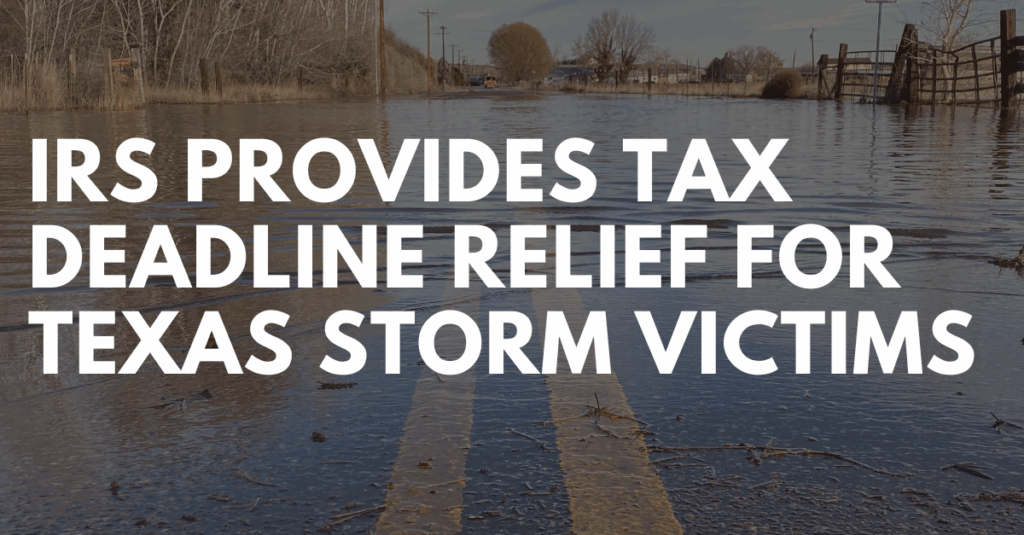The IRS is extending some tax deadlines for victims of the July flooding in Texas. If you live or work in the impacted areas, key tax deadlines have been postponed to February 2, 2026. Here’s a clear guide to who qualifies, what relief is available, and what steps to take next.
Who Qualifies?
You may be eligible for tax relief if you live, run a business, or have tax records in one of the following Texas counties: Burnet, Kendall, Kerr, Kimble, Menard, San Saba, Tom Green, Travis, and Williamson.
Eligibility also extends to:
- Relief workers assisting in the disaster area.
- Taxpayers with records (payroll or tax documents) located in these counties.
- Individuals or businesses impacted while visiting the disaster area.
If you’re unsure about your eligibility, contact the IRS at 866-562-5227 for clarification.
What Relief Is Available:
The IRS is postponing multiple key deadlines to February 2, 2026, including:
- Individual and business tax returns with valid extensions expiring on October 15, 2025 (for 2024 returns).
- Quarterly estimated income tax payments normally due on Sept. 15, 2025, and Jan. 15, 2026.
- Quarterly payroll and excise tax returns normally due on July 31, Oct. 31, 2025, and Jan. 31, 2026.
- Calendar-year partnerships and S corporations with 2024 extensions expiring on Sept. 15, 2025.
- Calendar-year corporations whose 2024 extensions expire on Oct. 15, 2025.
- Calendar-year tax exempt organizations whose extensions expire on Nov. 17, 2025.
Important Notes:
- Automatic relief: If you’re in a qualifying county, filing extensions are automatic, but tax payments must still be made by February 2, 2026, to avoid interest and penalties. Please note that payments for returns on a filing extension are not eligible for additional time to pay as filing extensions only apply to the filing of the return and not to payments.
- Penalty waivers: If you receive a penalty notice for filings, payments, or deposits originally due between July 2, 2025, and February 2, 2026, call the number on the notice or 866-562-5227 to request a waiver.
- Taxpayers outside the disaster area: If your tax preparer is outside the affected area but your records are located in one of the listed counties, you can request relief by calling the IRS.
What to Do Next:
- Identify if you’re in an eligible county or if your records are located there.
- Prepare your returns as usual, but keep in mind the updated deadline of February 2, 2026.
- Schedule tax payments so they will be made by February 2, 2026 to avoid penalties.
- Claim disaster losses using IRS Publication 547 and Form 4684, designating your return appropriately.
- Contact the IRS if you’re not automatically recognized as eligible or need assistance, call 866-562-5227.
If you have questions or need assistance with your tax return, Five Stone is here to help. Book your consultation today.
For more information, visit the links below.
